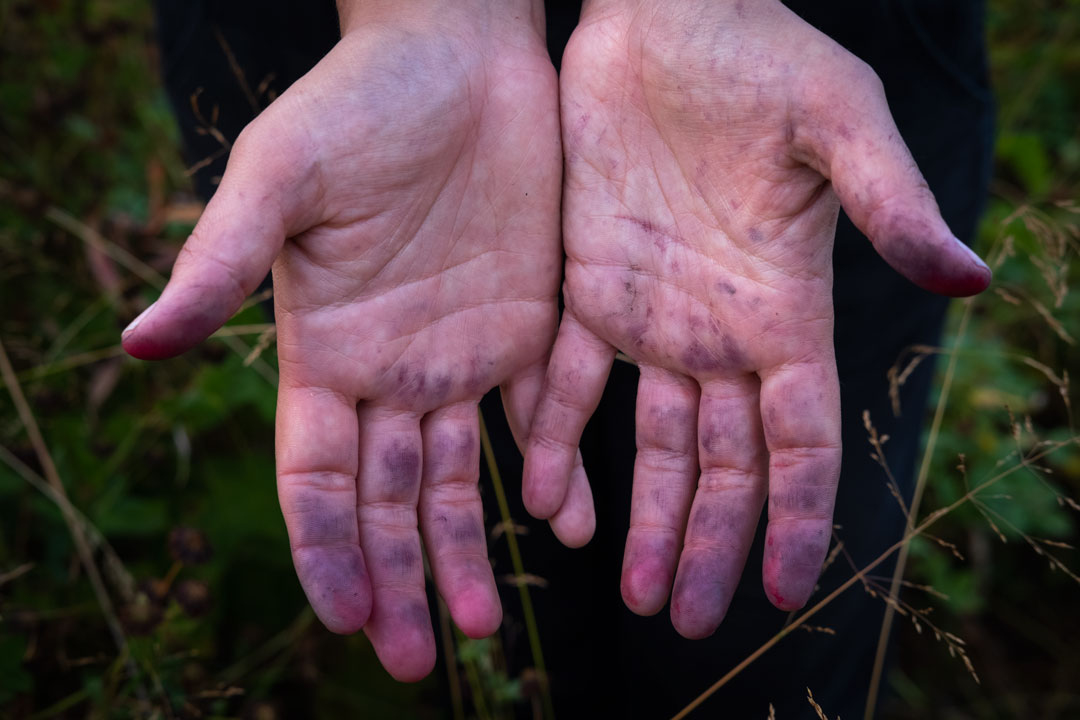Witnessing "Tsēmā Igharas: Hughadēsłēł — give it all away": airing Dec. 12 + 19 on Speak Up!

What does it mean to bear witness? To be a part of something much larger and more intertwined than the limitations of the individual? How do we shift the paradigm of transactions rooted in impersonal exchanges of the material to intimate sharing between the self and the collective?
In Indigenous philosophy, giving is intertwined with wealth and abundance and status is gained or lost depending on the reciprocal relationship one has with land and community. Exchanges and business in ceremony, and in life, assumes a spiritual form. The act of witnessing is also the act of universal acceptance. It is this ideology that has helped Indigenous Nations maintain sustenance for centuries.
Following Tsēmā Igharas’ performance at SFU Gallery, which culminated her solo exhibition at SFU in Fall 2022, Hughadēsłēł — give it all away, guest participants were invited to recount the event in, as Igharas describes, “a collective remembering, a truth about an experience.” Listen as participants Tanya Lukin Linklater, Alysha Johnny Hawkins, and Mique’l Dangeli share their witnessed encounters together in a conversation, which will air in two parts on the Dec. 12 and Dec. 19 episodes of CJSF's spoken word hour, Speak Up!, from 10-11am.
The original conversation was 75 minutes and for broadcast purposes the audio has been edited into two equal parts both opening with an introduction by the editors Haley McLean and Kristy Trinier. Original sound editing is by Jean Brazeau, and the radio edit is by robin eriksson.
Participant Biographies:
Tanya Lukin Linklater's performances, works for camera, installations, and writings cite Indigenous dance and visual art lineages, our structures of sustenance, and weather as an organizing force. She undertakes embodied inquiry and rehearsal in relation to scores and ancestral belongings in museums and elsewhere alongside dance artists, composers, and poets. Through collaboration, her work reckons with histories that affect Indigenous peoples’ lived experiences, (home)lands, and ideas. She continues to write in relation to what she has come to call felt structures. Her Alutiiq/Sugpiaq homelands are in southwestern Alaska where much of her family continues to live. She is a member of the Native Villages of Afognak and Port Lions in the Kodiak archipelago.
Alysha Johnny Hawkins is a Tahltan multidisciplinary visual artist. Her practice grapples with mediums like filmmaking, photography, painting, and Indigenous artmaking through beading, sewing, drumming, and traditional song and dance. She also enjoys being connected to her homelands through activities like fishing, hunting, hiking and snowshoeing. Hawkins’ primary inspirations stems from her desire to share her culture with the world through diverse mediums of creation and traditional sustenance. She is currently pursuing her Bachelor of Visual Arts at Emily Carr University of Art + Design. She has also recently gained a position as a research assistant for Tu’dese’cho Wholistic Indigenous Leadership Development (TWILD), in which she will be able to better research, practice, and teach about her Tahltan heritage.
Mique’l Dangeli was born and raised on the Annette Island Indian Reserve, and is of the Tsimshian Nation of Metlakatla, Alaska. She is an assistant professor in the School of Creative Arts at the University of the Fraser Valley in Abbotsford, British Columbia. Her work focuses on Indigenous language revitalization, visual and performing arts, resurgence, sovereignty, protocol, and decolonization. Dangeli is a dancer, choreographer, curator and activist. As one of the youngest advanced speakers and teachers of her people’s language, she is dedicated to teaching Sm’algyaBx in community-based and university-accredited classes as well as mentoring learners and educational staff in their process of language acquisition and the creation of pre-K to high school programs. For the past fifteen years, she and her husband, artist and carver Mike Dangeli (Nisga’a Nation), have led the Git Hayetsk Dancers, an internationally renowned Northwest Coast First Nations dance group specializing in ancient and newly created songs and mask dances.
Haley McLean is a member of the Tsesk’iye clan of the Tàłtàn Nation. Her mother is Noreen Vance, and her grandmother is Janet Vance. Haley is currently in the process of obtaining her post-secondary education, and more specifically, aiming to complete her Bachelor’s degree in English. She spent the majority of her childhood and teenage years in the rural town of Telegraph Creek, learning the cultural life skills of hunting, fishing, sewing, and food preparation. Above all, Haley has an immense appreciation for the nature and wildlife she spent much of her time surrounded by as a child. She expresses gratitude for the strategies and values provided to her from growing up in such a culturally enriched environment. Today, Haley resides in the city of Vancouver for both work and education.
Kristy Trinier is the Curator for SFU Galleries at Simon Fraser University. Her roles included Executive Director, SAAG | Maansiksikaitsitapiitsinikssin contemporary art gallery; Curator, Art Gallery of Alberta; Public Art Director, Edmonton Arts Council; Director of Visual, Digital, and Media Arts, Arts Faculty, and Campaign Grant Writer and Researcher at the Banff Centre for the Arts. She is a Board Director of the Cohen Foundation and co-producer of Publication Studio. Kristy Trinier holds a BFA, University of Victoria; Master's degree in Public Art, Dutch Art Institute (DAI); and a PhD in Philosophy, Art, and Critical Thought at EGS in Switzerland.
Image Credit:
Tsēmā Igharas: Hughadēsłēł — give it all away: process image, digital photograph, 2022. Image courtesy of Tsēmā Igharas.
